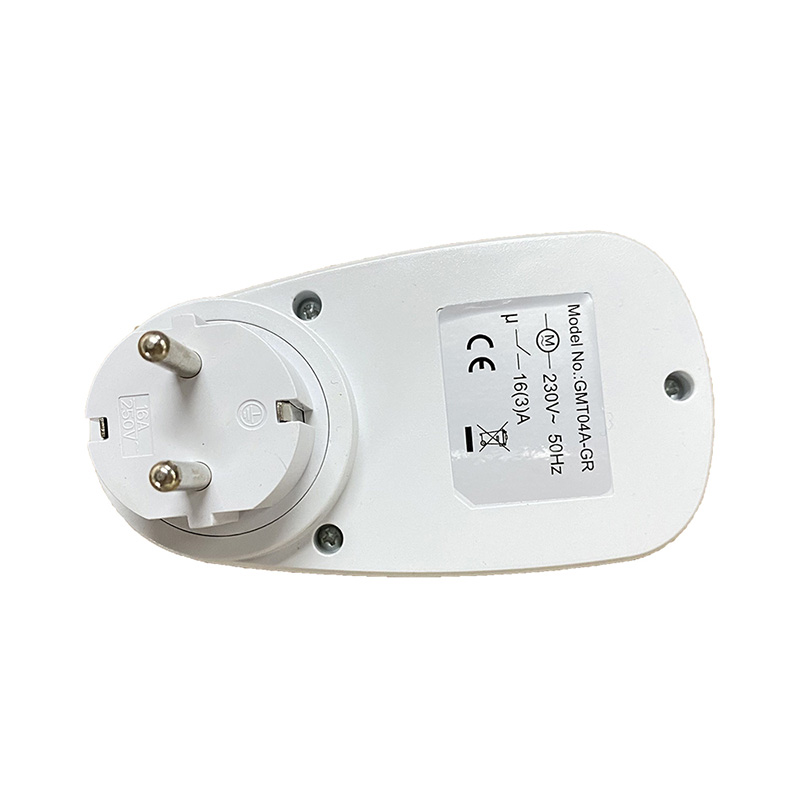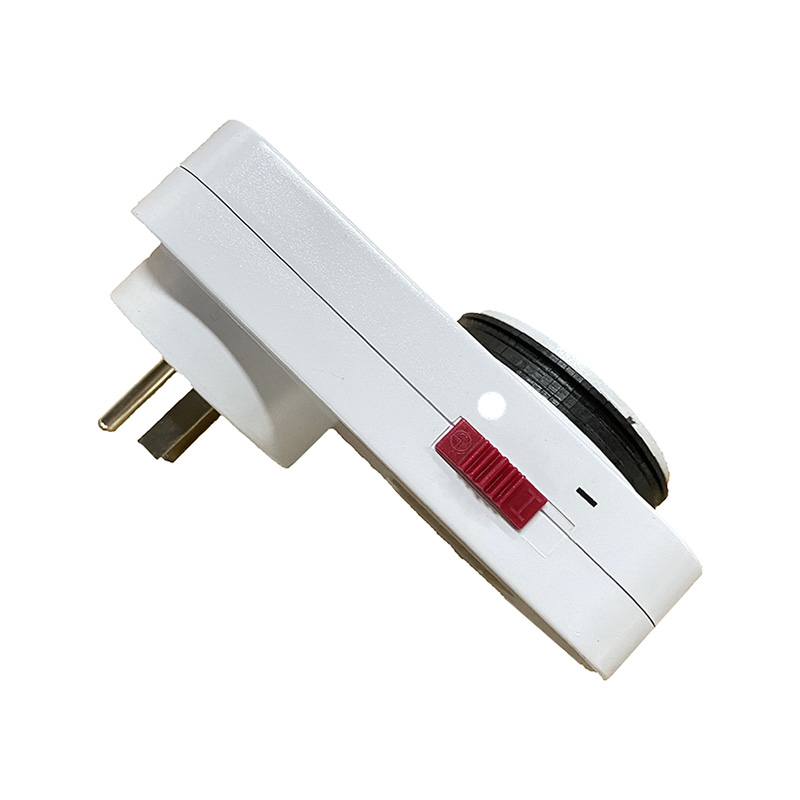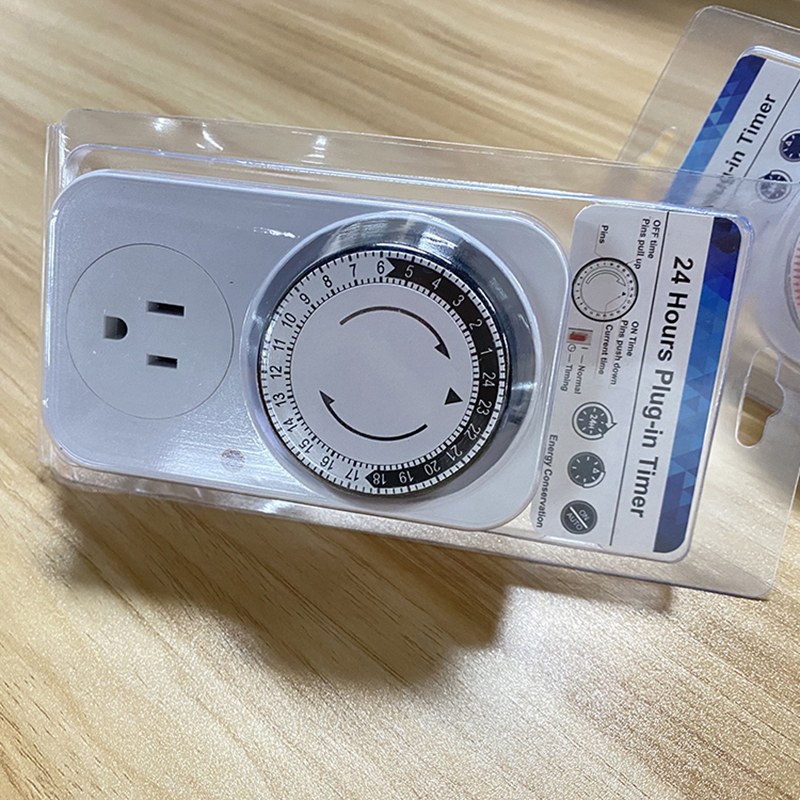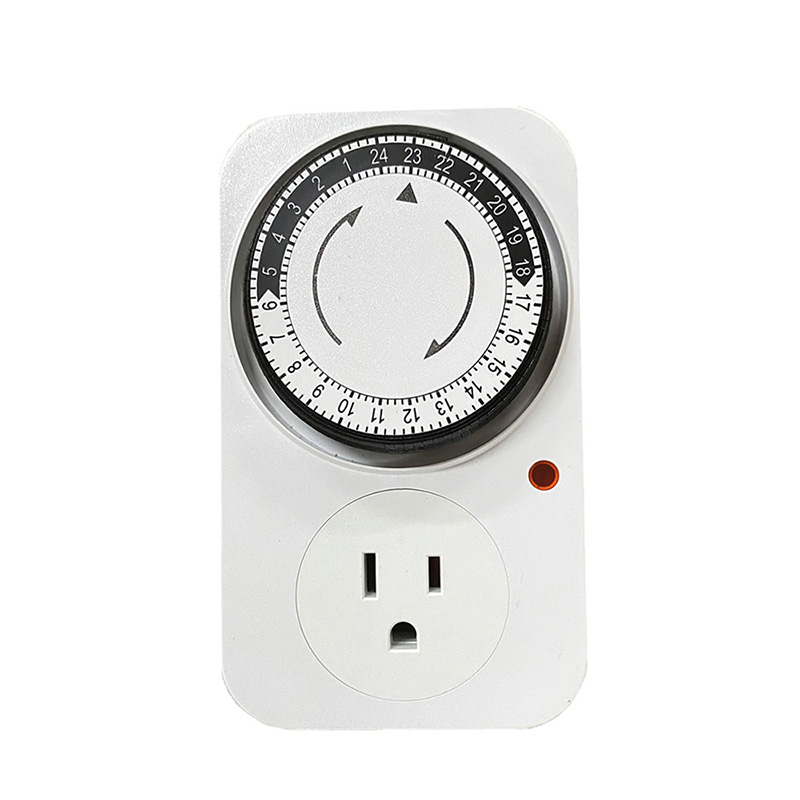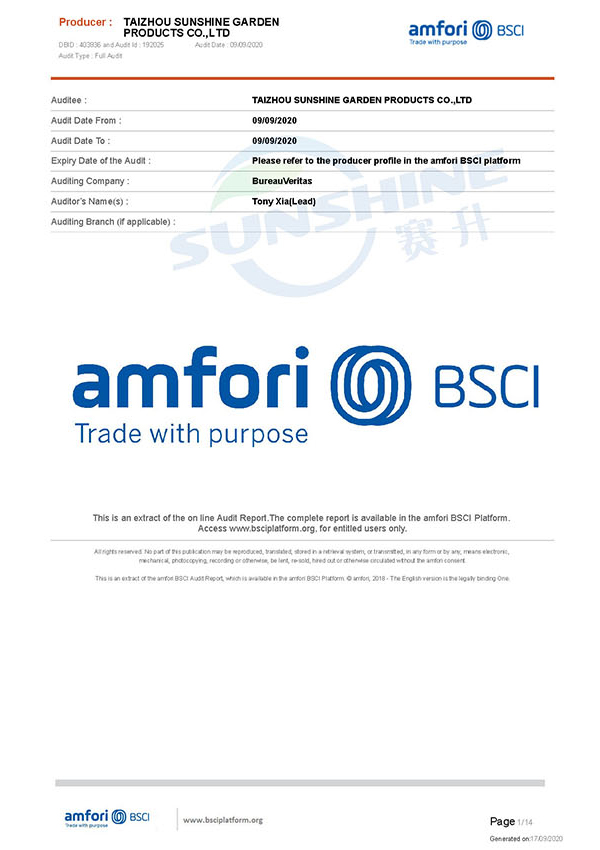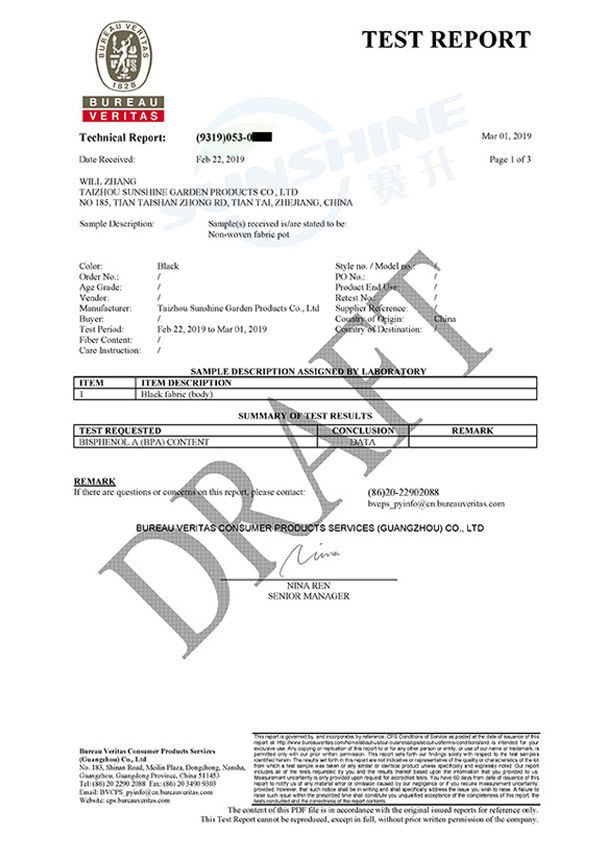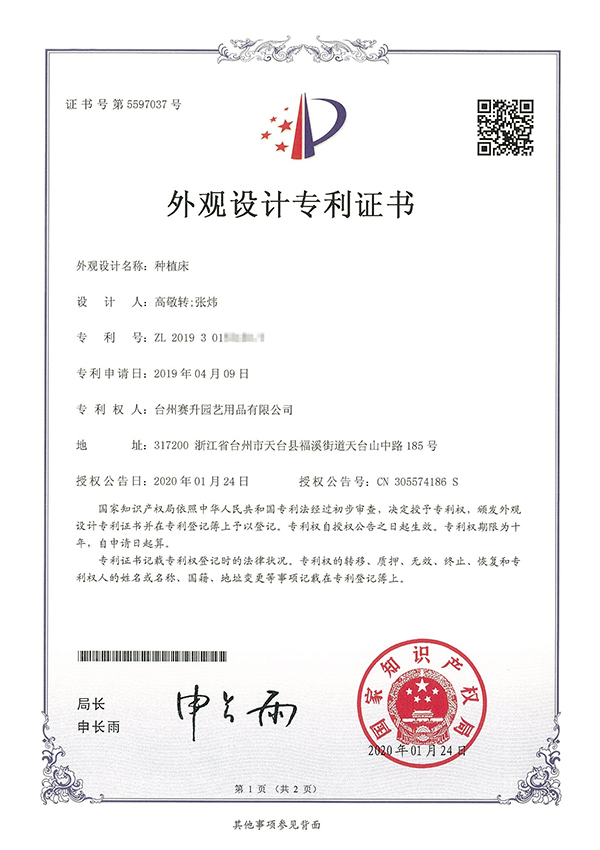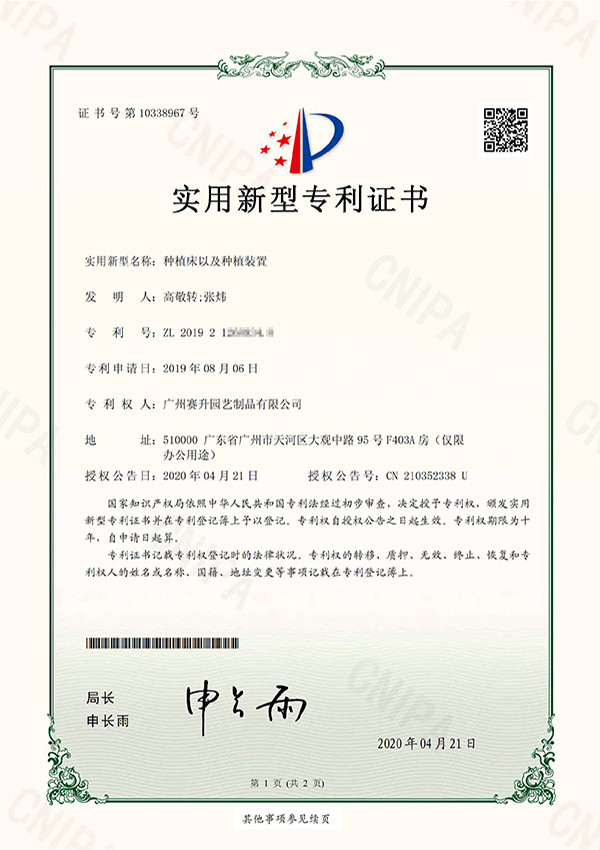
|
Place of Origin |
Guangdong, China |
|
Brand Name |
Sunshine Garden |
|
Model Number |
21003 |
|
Theory |
Digital |
|
Usage |
Timer Switch |
|
Type |
Mini |
|
Product name |
Electric Outlet Timer |
|
Pump type |
ON-OFF-ON |
|
Mounting Type |
Wall Mount |
|
Actuator Type |
Push Button |
Offers everything you need to build complete gardening and hydroponic systems.
.jpg) How Does Power Compatibility Influence CMH Sodium Light Performance?
Ensuring proper power compatibility is essential for the stable and safe performance of CMH Sodium Light systems. These lighting technologies rely on precise electrical conditions to maintain spectral accuracy and consistent intensity.
• The one key factor is matching the rated input voltage. CMH fixtures and ballasts are designed for specific voltage ranges, and deviations can result in ignition failure, flickering, or shortened ballast lifespan. Facilities with unstable electrical grids must use voltage regulators or stabilizers to prevent performance fluctuations.
• Frequency compatibility plays an equally important role. Ballasts designed for low-frequency operation behave differently from high-frequency digital ballasts. Using an incompatible ballast may cause acoustic resonance, overheating, or spectrum shifts that affect the uniformity of illumination.
• Power factor is another component of compatibility. High-power-factor ballasts reduce energy loss and reduce strain on the electrical distribution system. In setups involving dozens or hundreds of fixtures, improving the power factor enhances system efficiency and reduces heat buildup in wiring.
• Surge protection is crucial, especially in industrial or greenhouse environments where heavy machinery may introduce voltage spikes. High-quality ballasts incorporate surge suppression circuits that safeguard both the ballast and lamp.
What Role Does Ballast Design Play in Electrical Stability?
Ballasts are central to ensuring electrical stability in CMH lighting systems.
• Modern electronic ballasts provide controlled ignition pulses, ensuring reliable lamp startup even in varying temperature or humidity conditions. Poor-quality ballasts often fail to ignite the lamp consistently, causing downtime and maintenance issues.
• They regulate current flow throughout the operating cycle, preventing overcurrent conditions that can cause premature electrode degradation. Consistent current regulation also improves color stability and light output.
• Thermal management within the ballast is essential. Overheating can cause efficiency loss or complete failure. Well-designed ballasts include thermal cutoffs, temperature sensors, and heat-dissipating structures to maintain safe operating ranges.
• Some advanced ballasts feature active monitoring via microprocessors. These systems detect changes in voltage, current, and temperature, automatically adjusting output to maintain stable performance.
How Can Dimming Be Safely Implemented in CMH Systems?
Although dimming is beneficial for reducing energy consumption and optimizing light cycles, it must be handled carefully with CMH lamps.
• Not all CMH lamps are designed for dimming, so compatibility between the lamp and ballast must be confirmed. Using a dimmable ballast with a non-dimmable lamp can cause unstable arcs and reduced lifespan.
• Dimming range limits must be respected. Operating below a lamp’s wattage threshold prevents the salts inside the arc tube from fully vaporizing, causing flickering or color inconsistency.
• Smooth digital dimming is preferred. Abrupt changes in power input stress the lamp’s internal components. Advanced dimming ballasts adjust output gradually, ensuring stable transitions without damaging the arc tube.
• Temperature shifts related to dimming must be managed. Lower output levels decrease internal operating temperature, affecting vaporization rates. Intelligent ballasts compensate for these changes by adjusting current flow.
• Soft-start technology enhances dimming reliability. By gradually ramping up voltage during ignition, soft-start systems protect the electrodes and improve lamp longevity.
What Additional Design Measures Improve Reliability?
Optimizing system reliability requires addressing environmental and structural factors.
• Adequate fixture ventilation prevents overheating of both lamp and ballast. CMH systems generate significant heat, and insufficient airflow may compromise long-term stability.
• Electromagnetic interference shielding reduces the risk of disturbance from external devices. High-frequency ballasts may otherwise interfere with sensitive electronics.
• High-quality wiring and connectors ensure safe electrical transfer. Using heat-resistant cables reduces the risk of insulation degradation from prolonged operation.
• Routine maintenance—including cleaning dust from vents, checking connectors, and inspecting ballasts—helps preserve stable performance over time.
How Does Power Compatibility Influence CMH Sodium Light Performance?
Ensuring proper power compatibility is essential for the stable and safe performance of CMH Sodium Light systems. These lighting technologies rely on precise electrical conditions to maintain spectral accuracy and consistent intensity.
• The one key factor is matching the rated input voltage. CMH fixtures and ballasts are designed for specific voltage ranges, and deviations can result in ignition failure, flickering, or shortened ballast lifespan. Facilities with unstable electrical grids must use voltage regulators or stabilizers to prevent performance fluctuations.
• Frequency compatibility plays an equally important role. Ballasts designed for low-frequency operation behave differently from high-frequency digital ballasts. Using an incompatible ballast may cause acoustic resonance, overheating, or spectrum shifts that affect the uniformity of illumination.
• Power factor is another component of compatibility. High-power-factor ballasts reduce energy loss and reduce strain on the electrical distribution system. In setups involving dozens or hundreds of fixtures, improving the power factor enhances system efficiency and reduces heat buildup in wiring.
• Surge protection is crucial, especially in industrial or greenhouse environments where heavy machinery may introduce voltage spikes. High-quality ballasts incorporate surge suppression circuits that safeguard both the ballast and lamp.
What Role Does Ballast Design Play in Electrical Stability?
Ballasts are central to ensuring electrical stability in CMH lighting systems.
• Modern electronic ballasts provide controlled ignition pulses, ensuring reliable lamp startup even in varying temperature or humidity conditions. Poor-quality ballasts often fail to ignite the lamp consistently, causing downtime and maintenance issues.
• They regulate current flow throughout the operating cycle, preventing overcurrent conditions that can cause premature electrode degradation. Consistent current regulation also improves color stability and light output.
• Thermal management within the ballast is essential. Overheating can cause efficiency loss or complete failure. Well-designed ballasts include thermal cutoffs, temperature sensors, and heat-dissipating structures to maintain safe operating ranges.
• Some advanced ballasts feature active monitoring via microprocessors. These systems detect changes in voltage, current, and temperature, automatically adjusting output to maintain stable performance.
How Can Dimming Be Safely Implemented in CMH Systems?
Although dimming is beneficial for reducing energy consumption and optimizing light cycles, it must be handled carefully with CMH lamps.
• Not all CMH lamps are designed for dimming, so compatibility between the lamp and ballast must be confirmed. Using a dimmable ballast with a non-dimmable lamp can cause unstable arcs and reduced lifespan.
• Dimming range limits must be respected. Operating below a lamp’s wattage threshold prevents the salts inside the arc tube from fully vaporizing, causing flickering or color inconsistency.
• Smooth digital dimming is preferred. Abrupt changes in power input stress the lamp’s internal components. Advanced dimming ballasts adjust output gradually, ensuring stable transitions without damaging the arc tube.
• Temperature shifts related to dimming must be managed. Lower output levels decrease internal operating temperature, affecting vaporization rates. Intelligent ballasts compensate for these changes by adjusting current flow.
• Soft-start technology enhances dimming reliability. By gradually ramping up voltage during ignition, soft-start systems protect the electrodes and improve lamp longevity.
What Additional Design Measures Improve Reliability?
Optimizing system reliability requires addressing environmental and structural factors.
• Adequate fixture ventilation prevents overheating of both lamp and ballast. CMH systems generate significant heat, and insufficient airflow may compromise long-term stability.
• Electromagnetic interference shielding reduces the risk of disturbance from external devices. High-frequency ballasts may otherwise interfere with sensitive electronics.
• High-quality wiring and connectors ensure safe electrical transfer. Using heat-resistant cables reduces the risk of insulation degradation from prolonged operation.
• Routine maintenance—including cleaning dust from vents, checking connectors, and inspecting ballasts—helps preserve stable performance over time.
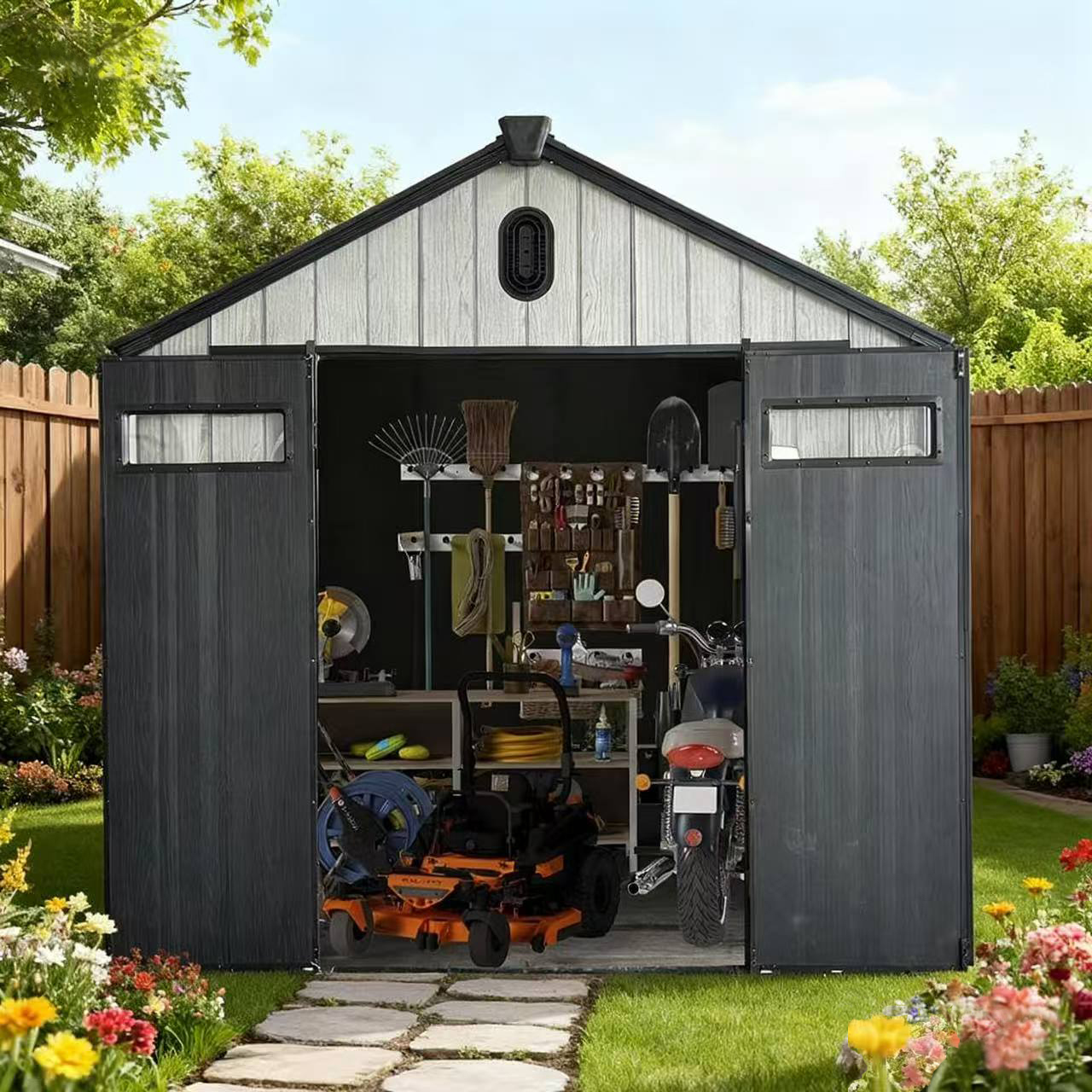 The resin tool shed is an outdoor storage structure made of high-strength resin materials (usually polyethylene or polypropylene), mainly used for storing gardening tools, power tools, outdoor equipment, etc. Here are its advantages:
Key Advantages
1. Extremely Low Maintenance:
No Rotting, Rusting, or Corroding: Unlike wood or metal, resin is impervious to water, insects, and rust.
No Painting or Staining Required: The color is molded throughout the material, so it won't peel or fade significantly.
2. Durability & Weather Resistance:
Waterproof: Seamless design and tight fittings keep rain and snow out effectively.
UV-Resistant: High-quality resins are treated to withstand sun exposure without significant brittleness or color loss.
Won't Dent: Unlike metal, it resists dents from impacts.
3. Lightweight & Easy Assembly:
Panels are much lighter than wood or metal, making them easier to handle.
They feature a modular, interlocking design (like a large puzzle) that typically requires only basic tools (screwdriver, mallet) for assembly.
4. Security & Stability:
Most models include a sturdy floor and anchor points to secure the shed to a base (like a concrete slab or wooden platform) for wind resistance.
Pre-drilled holes for padlocks on doors provide basic security for valuable tools.
5. Aesthetic and Practical Design:
Clean Look: Often designed to resemble wood paneling but without the upkeep. Available in various colors (green, grey, beige) to blend into garden settings.
Integrated Features: Many include built-in ventilation, skylights, sturdy shelving brackets, and wide double doors for easy access.
Important Considerations (Potential Drawbacks)
Weight Capacity/Limit: Not designed for extremely heavy industrial machinery. Check the manufacturer's weight specifications.
Extreme Heat: In very hot climates, poorly ventilated resin sheds can get quite warm inside.
Aesthetic: While neat, some prefer the natural look of a wooden shed over plastic.
Foundation is Crucial: This is the very critical step. A resin shed must be installed on a perfectly level, solid, and raised base (e.g., gravel, paving slabs, or a wooden frame) to prevent warping and ensure structural integrity.
The resin tool shed is an outdoor storage structure made of high-strength resin materials (usually polyethylene or polypropylene), mainly used for storing gardening tools, power tools, outdoor equipment, etc. Here are its advantages:
Key Advantages
1. Extremely Low Maintenance:
No Rotting, Rusting, or Corroding: Unlike wood or metal, resin is impervious to water, insects, and rust.
No Painting or Staining Required: The color is molded throughout the material, so it won't peel or fade significantly.
2. Durability & Weather Resistance:
Waterproof: Seamless design and tight fittings keep rain and snow out effectively.
UV-Resistant: High-quality resins are treated to withstand sun exposure without significant brittleness or color loss.
Won't Dent: Unlike metal, it resists dents from impacts.
3. Lightweight & Easy Assembly:
Panels are much lighter than wood or metal, making them easier to handle.
They feature a modular, interlocking design (like a large puzzle) that typically requires only basic tools (screwdriver, mallet) for assembly.
4. Security & Stability:
Most models include a sturdy floor and anchor points to secure the shed to a base (like a concrete slab or wooden platform) for wind resistance.
Pre-drilled holes for padlocks on doors provide basic security for valuable tools.
5. Aesthetic and Practical Design:
Clean Look: Often designed to resemble wood paneling but without the upkeep. Available in various colors (green, grey, beige) to blend into garden settings.
Integrated Features: Many include built-in ventilation, skylights, sturdy shelving brackets, and wide double doors for easy access.
Important Considerations (Potential Drawbacks)
Weight Capacity/Limit: Not designed for extremely heavy industrial machinery. Check the manufacturer's weight specifications.
Extreme Heat: In very hot climates, poorly ventilated resin sheds can get quite warm inside.
Aesthetic: While neat, some prefer the natural look of a wooden shed over plastic.
Foundation is Crucial: This is the very critical step. A resin shed must be installed on a perfectly level, solid, and raised base (e.g., gravel, paving slabs, or a wooden frame) to prevent warping and ensure structural integrity.
.png) How Does CMH Sodium Light Influence Overall Illumination Uniformity?
The use of CMH Sodium Light in horticulture and commercial lighting systems has become increasingly common due to its ability to deliver a balanced spectrum and strong radiant output. One of the relevant performance aspects is illumination uniformity—how evenly the light spreads over a designated area. Uniformity plays a major role in plant growth, visual comfort, and energy efficiency.
• CMH-based sources typically produce a wider and more consistent beam pattern compared with traditional sodium lamps. Their arc tube design and optimized reflector compatibility help reduce hot spots and shadowed regions.
• The broad-spectrum output improves the perceived and functional uniformity of light because wavelengths are more evenly distributed across the target surface. This makes them particularly favorable for grow rooms, retail areas, or warehouse settings that require predictable coverage.
• Fixture geometry also contributes significantly. When paired with deep reflectors, these lights can distribute photons more evenly at medium-to-high mounting heights. However, shallow reflectors may create higher peak intensities in the center, reducing uniformity at the edges.
• Spacing between fixtures further influences distribution. CMH systems tend to tolerate wider spacing due to their effective diffusion, but improper layout can still cause overlit centers and dim outer zones. Designers need to evaluate spacing-to-mounting height ratios carefully to maintain even illumination.
How Much Does CMH Sodium Light Affect Intensity Levels Across a Growing or Working Area?
Light intensity is critical for photosynthesis, visual tasks, and thermal management. The intensity delivered by CMH Sodium Light is influenced by wattage, spectrum, and bulb and ballast performance.
• CMH lamps generally deliver higher PAR (Photosynthetically Active Radiation) per watt than traditional metal halide lamps. This higher photon efficiency translates into stronger plant growth or brighter illumination at the same power level.
• The high CRI (Color Rendering Index) also gives the impression of greater brightness, even when intensity measurements (in lux or μmol/m²/s) are similar to competing technologies. This visual effect makes CMH systems popular in environments where color differentiation matters.
• Over short distances, CMH fixtures can produce strong peak intensities due to their compact source. This can be beneficial for applications requiring directed, high-density light. However, it can also increase the risk of hotspots if the fixture is mounted too low or aimed improperly.
• Intensity stability over time is another advantage. CMH lamps degrade more slowly than conventional sodium lamps, keeping intensity levels consistent and predictable. This reduces the need for frequent light planning adjustments or bulb replacements.
What Design Factors Determine Whether Uniformity and Intensity Remain Suitable?
Achieving both uniformity and sufficient intensity requires thoughtful system design.
• Reflector Selection: Deep parabolic reflectors increase downward intensity but reduce side diffusion, affecting uniformity. Wide-angle reflectors distribute light broadly but may reduce center intensity. The ideal choice depends on mounting height and coverage requirements.
• Mounting Height: Higher mounting heights improve uniformity by blending overlapping beams. However, they reduce intensity and may require higher wattage fixtures to meet PAR or lux targets.
• Lamp Orientation: Vertical vs. horizontal lamp placements influence how energy is distributed. Vertical lamps often give more symmetrical spreads, while horizontal lamps generate stronger directional beams.
• Ballast Quality: Poor-quality ballasts can cause flicker or inconsistent arc stability, affecting both uniformity and effective intensity. High-frequency digital ballasts typically enhance both parameters.
• Environmental Surfaces: Reflective walls and ceilings can improve uniformity by redistributing stray photons. Conversely, dark surfaces absorb light, increasing intensity requirements.
• Application Type: Horticulture applications benefit from high uniformity to avoid uneven canopy development, while industrial lighting may prioritize intensity for specific task areas.
How Does CMH Sodium Light Influence Overall Illumination Uniformity?
The use of CMH Sodium Light in horticulture and commercial lighting systems has become increasingly common due to its ability to deliver a balanced spectrum and strong radiant output. One of the relevant performance aspects is illumination uniformity—how evenly the light spreads over a designated area. Uniformity plays a major role in plant growth, visual comfort, and energy efficiency.
• CMH-based sources typically produce a wider and more consistent beam pattern compared with traditional sodium lamps. Their arc tube design and optimized reflector compatibility help reduce hot spots and shadowed regions.
• The broad-spectrum output improves the perceived and functional uniformity of light because wavelengths are more evenly distributed across the target surface. This makes them particularly favorable for grow rooms, retail areas, or warehouse settings that require predictable coverage.
• Fixture geometry also contributes significantly. When paired with deep reflectors, these lights can distribute photons more evenly at medium-to-high mounting heights. However, shallow reflectors may create higher peak intensities in the center, reducing uniformity at the edges.
• Spacing between fixtures further influences distribution. CMH systems tend to tolerate wider spacing due to their effective diffusion, but improper layout can still cause overlit centers and dim outer zones. Designers need to evaluate spacing-to-mounting height ratios carefully to maintain even illumination.
How Much Does CMH Sodium Light Affect Intensity Levels Across a Growing or Working Area?
Light intensity is critical for photosynthesis, visual tasks, and thermal management. The intensity delivered by CMH Sodium Light is influenced by wattage, spectrum, and bulb and ballast performance.
• CMH lamps generally deliver higher PAR (Photosynthetically Active Radiation) per watt than traditional metal halide lamps. This higher photon efficiency translates into stronger plant growth or brighter illumination at the same power level.
• The high CRI (Color Rendering Index) also gives the impression of greater brightness, even when intensity measurements (in lux or μmol/m²/s) are similar to competing technologies. This visual effect makes CMH systems popular in environments where color differentiation matters.
• Over short distances, CMH fixtures can produce strong peak intensities due to their compact source. This can be beneficial for applications requiring directed, high-density light. However, it can also increase the risk of hotspots if the fixture is mounted too low or aimed improperly.
• Intensity stability over time is another advantage. CMH lamps degrade more slowly than conventional sodium lamps, keeping intensity levels consistent and predictable. This reduces the need for frequent light planning adjustments or bulb replacements.
What Design Factors Determine Whether Uniformity and Intensity Remain Suitable?
Achieving both uniformity and sufficient intensity requires thoughtful system design.
• Reflector Selection: Deep parabolic reflectors increase downward intensity but reduce side diffusion, affecting uniformity. Wide-angle reflectors distribute light broadly but may reduce center intensity. The ideal choice depends on mounting height and coverage requirements.
• Mounting Height: Higher mounting heights improve uniformity by blending overlapping beams. However, they reduce intensity and may require higher wattage fixtures to meet PAR or lux targets.
• Lamp Orientation: Vertical vs. horizontal lamp placements influence how energy is distributed. Vertical lamps often give more symmetrical spreads, while horizontal lamps generate stronger directional beams.
• Ballast Quality: Poor-quality ballasts can cause flicker or inconsistent arc stability, affecting both uniformity and effective intensity. High-frequency digital ballasts typically enhance both parameters.
• Environmental Surfaces: Reflective walls and ceilings can improve uniformity by redistributing stray photons. Conversely, dark surfaces absorb light, increasing intensity requirements.
• Application Type: Horticulture applications benefit from high uniformity to avoid uneven canopy development, while industrial lighting may prioritize intensity for specific task areas.
.png) CMH Sodium Light has gained widespread adoption in horticultural, commercial, and industrial applications due to its high luminous efficiency, stable color output, and extended lifespan. However, its performance is closely tied to the stability of the electrical supply. Voltage fluctuations and frequency variations can significantly influence the lamp’s operation, affecting light output, efficiency, and long-term reliability. Understanding the adaptability of CMH Sodium Light to these variations is essential for both manufacturers and end-users who seek consistent performance in environments with variable electrical conditions.
Impact of Voltage Fluctuations
Voltage fluctuations are a common challenge in many electrical systems, ranging from minor deviations to sudden spikes or drops. CMH Sodium Light is designed to operate within a specified voltage range. When the voltage falls below this range, the lamp may fail to ignite properly or deliver insufficient brightness, compromising performance. Conversely, high voltage can overstress the arc tube and ballast, causing excessive heat generation, accelerated wear, and potential lamp failure. Repeated exposure to voltage irregularities can reduce lamp life, increase maintenance requirements, and affect the overall cost-effectiveness of the lighting system.
Frequency Variation and Lamp Performance
The electrical frequency, typically 50 Hz or 60 Hz depending on the region, also plays a vital role in lamp operation. Minor deviations are usually tolerable, but substantial frequency variations can interfere with the ballast’s regulation of current and voltage. This may cause flickering, unstable arc formation, or inconsistent luminous output. Advanced ballasts in CMH Sodium Lights are designed to compensate for such variations, maintaining steady light output and protecting the lamp’s internal components. Proper matching of lamp specifications with regional frequency standards is crucial to avoid operational disruptions and ensure efficiency.
Ballast Technology and Electrical Adaptation
The ballast is the key element that enables CMH Sodium Light to handle voltage and frequency variations. Modern electronic ballasts actively monitor incoming electrical conditions and regulate current to stabilize lamp operation. They protect against overvoltage, undervoltage, and frequency-induced fluctuations. Magnetic ballasts, while less sophisticated, are robust and capable of tolerating standard regional electrical variations. Choosing the correct ballast type is critical to ensure that CMH Sodium Light maintains consistent performance, reduces energy losses, and improves service life.
Protective Measures for Users
For environments with an unstable electrical supply, additional protective measures can enhance the lamp’s adaptability. Voltage stabilizers, surge protectors, or uninterruptible power supplies (UPS) can safeguard against sudden spikes or drops, ensuring reliable operation. Proper installation practices, including correct ballast selection and compliance with manufacturer guidelines, further improve resilience to electrical fluctuations. Users must also consider environmental conditions, such as temperature and humidity, as these can compound the effects of electrical instability and affect overall lamp performance.
Long-Term Implications
Electrical adaptability has long-term implications for efficiency, maintenance, and cost. Lamps that can tolerate minor fluctuations without damage reduce downtime and maintenance frequency, providing consistent illumination and reducing operational costs. Conversely, lamps exposed to uncontrolled voltage or frequency variations may experience accelerated wear, diminished light quality, and shortened lifespan, ultimately affecting the reliability of lighting systems in critical applications such as horticulture or industrial workspaces.
CMH Sodium Light demonstrates strong adaptability to electrical fluctuations, largely due to advanced ballast technology and engineered tolerances for voltage and frequency variations. While minor deviations are well-managed, prolonged electrical irregularities can affect performance and longevity. Implementing protective measures, selecting compatible ballasts, and adhering to manufacturer specifications ensure consistent, efficient, and safe operation. By understanding and managing electrical variability, users can improve the benefits of CMH Sodium Light, maintaining high-quality illumination across diverse applications and challenging environments.
CMH Sodium Light has gained widespread adoption in horticultural, commercial, and industrial applications due to its high luminous efficiency, stable color output, and extended lifespan. However, its performance is closely tied to the stability of the electrical supply. Voltage fluctuations and frequency variations can significantly influence the lamp’s operation, affecting light output, efficiency, and long-term reliability. Understanding the adaptability of CMH Sodium Light to these variations is essential for both manufacturers and end-users who seek consistent performance in environments with variable electrical conditions.
Impact of Voltage Fluctuations
Voltage fluctuations are a common challenge in many electrical systems, ranging from minor deviations to sudden spikes or drops. CMH Sodium Light is designed to operate within a specified voltage range. When the voltage falls below this range, the lamp may fail to ignite properly or deliver insufficient brightness, compromising performance. Conversely, high voltage can overstress the arc tube and ballast, causing excessive heat generation, accelerated wear, and potential lamp failure. Repeated exposure to voltage irregularities can reduce lamp life, increase maintenance requirements, and affect the overall cost-effectiveness of the lighting system.
Frequency Variation and Lamp Performance
The electrical frequency, typically 50 Hz or 60 Hz depending on the region, also plays a vital role in lamp operation. Minor deviations are usually tolerable, but substantial frequency variations can interfere with the ballast’s regulation of current and voltage. This may cause flickering, unstable arc formation, or inconsistent luminous output. Advanced ballasts in CMH Sodium Lights are designed to compensate for such variations, maintaining steady light output and protecting the lamp’s internal components. Proper matching of lamp specifications with regional frequency standards is crucial to avoid operational disruptions and ensure efficiency.
Ballast Technology and Electrical Adaptation
The ballast is the key element that enables CMH Sodium Light to handle voltage and frequency variations. Modern electronic ballasts actively monitor incoming electrical conditions and regulate current to stabilize lamp operation. They protect against overvoltage, undervoltage, and frequency-induced fluctuations. Magnetic ballasts, while less sophisticated, are robust and capable of tolerating standard regional electrical variations. Choosing the correct ballast type is critical to ensure that CMH Sodium Light maintains consistent performance, reduces energy losses, and improves service life.
Protective Measures for Users
For environments with an unstable electrical supply, additional protective measures can enhance the lamp’s adaptability. Voltage stabilizers, surge protectors, or uninterruptible power supplies (UPS) can safeguard against sudden spikes or drops, ensuring reliable operation. Proper installation practices, including correct ballast selection and compliance with manufacturer guidelines, further improve resilience to electrical fluctuations. Users must also consider environmental conditions, such as temperature and humidity, as these can compound the effects of electrical instability and affect overall lamp performance.
Long-Term Implications
Electrical adaptability has long-term implications for efficiency, maintenance, and cost. Lamps that can tolerate minor fluctuations without damage reduce downtime and maintenance frequency, providing consistent illumination and reducing operational costs. Conversely, lamps exposed to uncontrolled voltage or frequency variations may experience accelerated wear, diminished light quality, and shortened lifespan, ultimately affecting the reliability of lighting systems in critical applications such as horticulture or industrial workspaces.
CMH Sodium Light demonstrates strong adaptability to electrical fluctuations, largely due to advanced ballast technology and engineered tolerances for voltage and frequency variations. While minor deviations are well-managed, prolonged electrical irregularities can affect performance and longevity. Implementing protective measures, selecting compatible ballasts, and adhering to manufacturer specifications ensure consistent, efficient, and safe operation. By understanding and managing electrical variability, users can improve the benefits of CMH Sodium Light, maintaining high-quality illumination across diverse applications and challenging environments.

Features: 1. NO LOOSE PARTS: Unlike classic timers with removable pins, our timer features an easy t...

Features: 1. NO LOOSE PARTS: Unlike classic timers with removable pins, our timer features an easy t...

Features: 1. NO LOOSE PARTS: Unlike classic timers with removable pins, our timer features an easy t...

Features: 1. NO LOOSE PARTS: Unlike classic timers with removable pins, our timer features an easy t...
.jpg?imageView2/2/w/800/h/800/format/webp/q/75)
Indoor Hydroponics LED Room Tent Glasses for Intense Bright Grow Light Visual Eye Protection Anti-UV...

1. Temperature measurement range: -10℃~ +50℃(-14℉~+122℉) 2. Temperature measurement accuracy: ±1℃(1....

1. NO LOOSE PARTS: Unlike classic timers with removable pins, our timer features an easy to use, bui...
.jpg?imageView2/2/w/800/h/800/format/webp/q/75)
Hydroponics Rope Hanger 1) Easily use and adjust the height.2) Stainless steel spring ,with screws a...
.jpg?imageView2/2/w/800/h/800/format/webp/q/75)
This 6 inch clip on fan is an extremely convenient portable fan that can be used just about anywhere...
-1.jpg?imageView2/2/w/800/h/800/format/webp/q/75)
Duct Fan Series This CDR series external rotor duct fan is a radial fan.This fan with compact struct...

This inline duct fan is equipped with a powerful blower, it optimizes ventilation by targeting airfl...
.jpg?imageView2/2/w/800/h/800/format/webp/q/75)
Grow Tent Ventilation Kit Duct Fan Air Circulation Vent BlowerPerfect for grow tents, greenhouses, h...


 Innovation Team
Innovation Team Patented Technology
Patented Technology Quality Assurance
Quality Assurance Efficient Response
Efficient Response